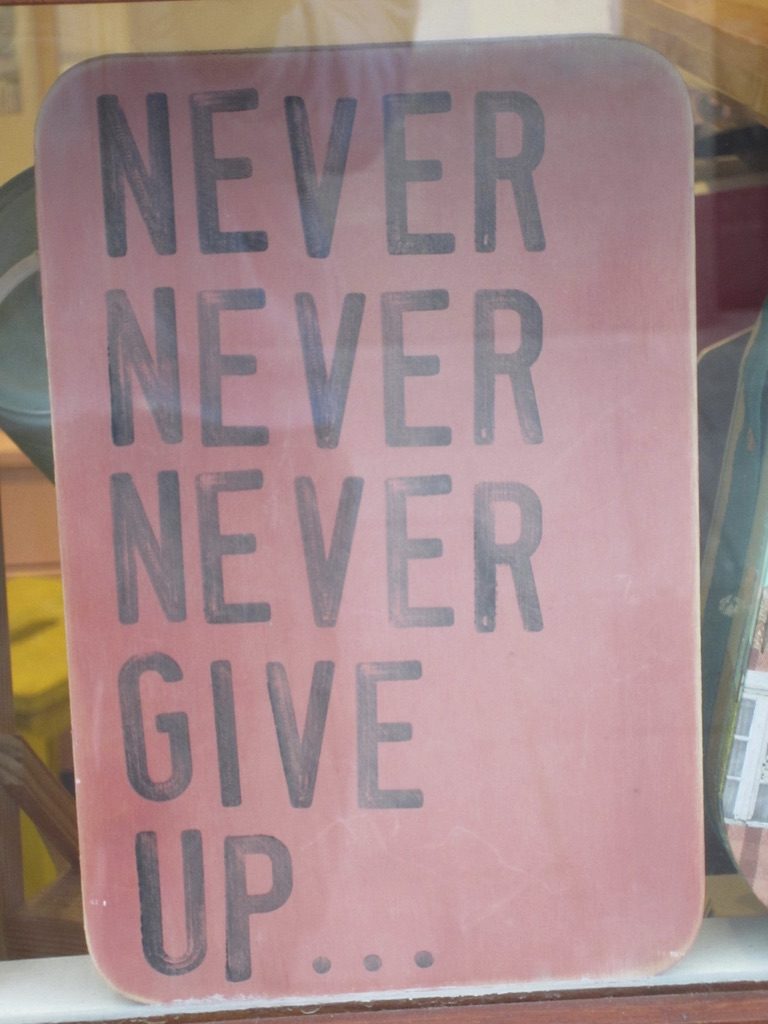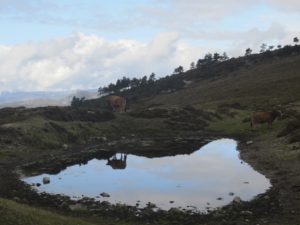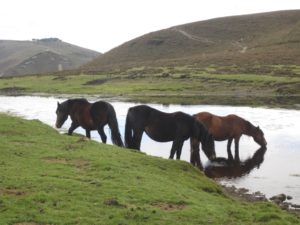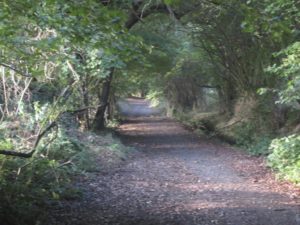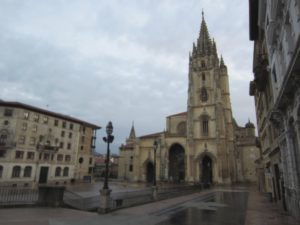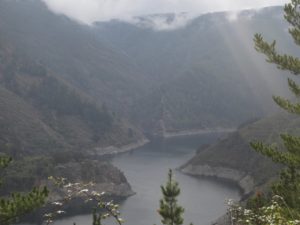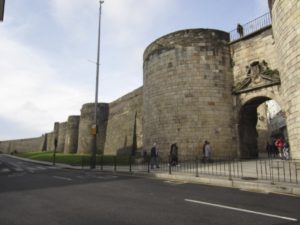THE PRIMITIVO
THE FIRST CAMINO
Stretching from Oviedo to Santiago, a distance of about 300 kilometres, the Camino Primitivo is one of the lesser known routes to Santiago but without question one of the most spectacular. At a comfortable pace it can be completed in about twelve days. In contrast to the over popular Camino Francés the Primitivo is a more solitary walk, but you find enough fellow pilgrims on the route to ensure you’ll have plenty of good company. Many people walk the Primitivo as an extension to the Camino del Norte. It’s a challenging walk, with lots of mountainous ascents and descents, but what it demands in terms of physical exertion it more than makes up for with stunning views, inspirational sunrises and transcendent moments.
The Primitivo was the original Camino, and it still feels relatively undiscovered. Oviedo was the first starting point for a pilgrim route to Santiago, and many still consider that no pilgrimage is complete without first visiting its majestic cathedral. The city of Lugo, with its Roman walls, is the other major city on this path, and while there are many pretty small towns and villages along the way this corner of Spain remains fairly quiet and undisturbed.
The Primitivo traverses the provinces of Asturias and Galicia, and it joins up with the Camino Frances in the town of Melide, about 50 KM from Santiago. The crowds on the last stretch can come as a bit of a culture shock given the relative isolation of the way from Oviedo to Melide, but the intermingling of pilgrims from different paths offers a chance to meet new people, make new friends, and gain different perspectives about the journey.
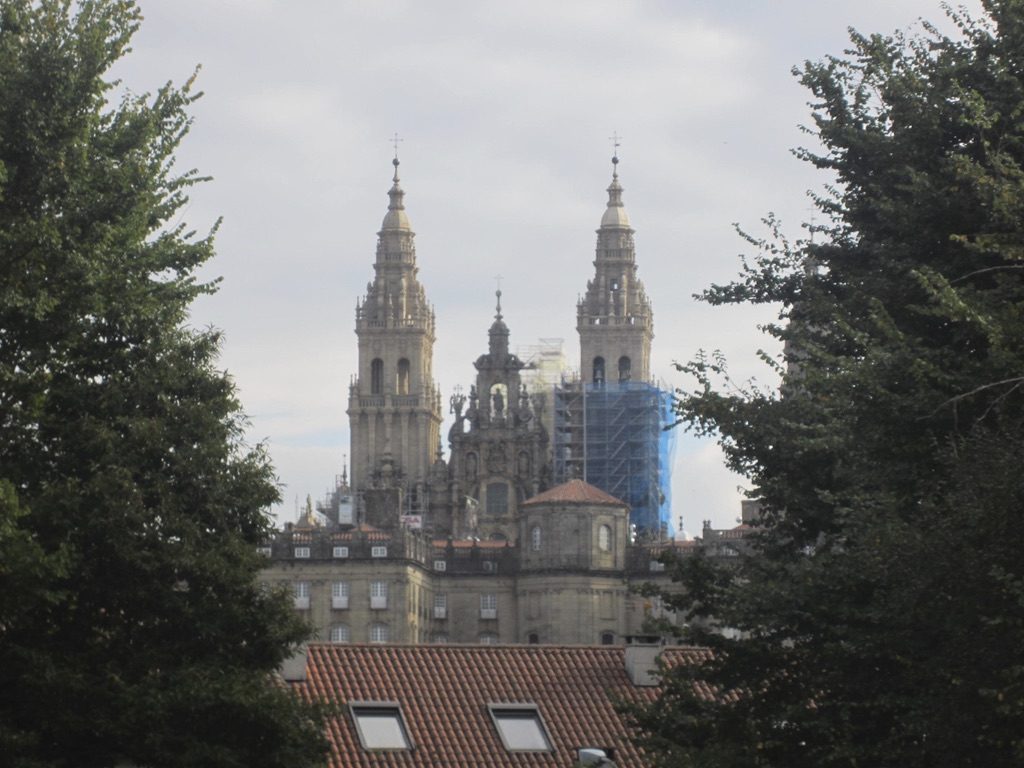
THE STAGES
I walked the Primitivo in October of 2016. It was quite well resourced at that point, and had a manageable number of pilgrims. Most towns had a mixture of municipal albergues and private accommodation, and there were plenty of shops and restaurants along the way as well, although there were a few sections where it was advisable to stock up on supplies in advance, especially if taking the Hospitales route (and you must take the Hospitales route). I opted to skip some of the bigger towns and stay in the smaller villages. There are some very unique albergues, which show great hospitality to pilgrims. The stages I outline here begin in Oviedo. If you want information for the stages that connect with the Primitivo from Villaviciosa on the Notre, please click here. As always, all questions and comments are welcome if you wish to contact me.
Leaving Oviedo doesn’t pose too many problems, and you’re quickly into the countryside. It’s a very pleasant walk today, with many impressive mountain views. The morning mists rolling down from the hills are one of the most amazing sights of the Primitivo. The market town of Grado is the main town for the day, and it’s the best place to stock up on supplies. There’s a 4 KM uphill walk from there to the albergue in San Juan de Villapanada, Make sure you have purchased supplies before you get there as there aren’t any other facilities nearby.
In 2016 this stage frequently crisscrossed a new motorway which was then under construction. Aside from that it was another very beautiful rural walk through the countryside of Asturias. The town of Salas is the main town along today’s path, and from there it’s a steep walk through woods towards the town of Bodenaya, which has a very special albergue. Just 1 KM further is the small town of La Espina, which also has a nice albergue, and restaurants.
The hills and valleys leading out from La Espina are a majestic sight when captured by the early morning sun, and today’s walk through quiet woodlands is another lovely and relatively easy day. The town of Tineo, at about the halfway point of today’s stage, lies just off the main route. There are two fine albergues in the village of Campiello. Casa Herminia was the one I chose, and it provided excellent hospitality and very good food. Be sure to get a good rest here, as the following day is a tough one.
There’s a total climb today of about one vertical kilometre, with a descent of slightly less. There are two routes to Berducedo: the Pola de Allende route, or the more challenging Hospitales path. On the latter there’s no where along the way to stock up on provisions, so be sure to have enough of everything before you begin. That said, be sure to take this path as you are less likely to encounter a more breathtakingly beautiful stage on any Camino. The mountain views are stunning on the ascent, and increase in impressiveness the higher you go. If it’s not totally fogged in, you may catch awe inspiring sights of clouded valleys beneath. It’s a challenging walk, but one of the most memorable. The village of Berducedo has albergues and some restaurants.
Although the distance covered today is relatively short, it involves a very steep descent into the gorge of the dammed Rio Navia. However, like the Hospitales route the day before, this is a walk offering some of the most spectacular scenery along any camino. After crossing the dam there’s another sharp ascent up the other side to the town of Grandas de Salime, which has an albergue, a few shops and a most interesting museum of Asturian rural life.
Today’s walk crosses from Asturias into Galicia, the home of Santiago de Compostela and the end of the journey. It’s another quiet rural walk today, with some fine views of the countryside. A Fonsagrada is a fairly typical small Galician town, which has a comfortable albergue, supermarkets, and restaurants.
A long and challenging walk through countryside and woodlands, with several steep and challenging ascents and descents. Nonetheless, it provides some impressive vistas of the Galician landscape. Many choose to spend the night in Cadavo Baleira, but those who have enough energy should continue approximately 9 KM to the town of Castroverde in order to have a shorter walk to Lugo the following day.
It’s a relatively short walk to Lugo today, and most of the journey runs along forested pathways and country roads. The city of Lugo, whose ancient city walls are a UNESCO World Heritage Site, is one of the great attractions of this Camino. The city’s albergue is located within the old town, and is within a short distance of the cathedral and the walls. Lugo is about 100 KM from Santiago, so it is also one of the last places to join the Primitivo if one wants to obtain a compostela.
Once out of Lugo you’re into the heart of rural Galicia, which often gives the impression of being one of the most isolated places on earth. Today’s long walk has few places to stop or stock up on provisions, but it’s largely flat and undemanding. As Seixas has a comfortable albergue, where a food truck stops by every afternoon. Enjoy the tranquility here, as tomorrow’s walk sees the Primitivo join up with the Frances, where the number of fellow travellers will skyrocket.
The first 15 KM of today’s walk wanders along quiet country roads where you’ll encounter few other pilgrims, but once you arrive at the town of Melide all that changes. This is where the Primitivo intersects with the Camino Frances, and the nature of the walk changes dramatically. Gone are the long stretches of relative isolation, but in their place are opportunities for making lots of new friends. The stretch from Melide to Arzua is a mixture of road and pathways, and the town of Arzua has a plentiful supply of albergues, shops and restaurants.
Santiago is almost in touching distance now, and some choose to walk the whole way from Arzua to Santiago in one day, a walk of about 39 KM. If you have time on your side it might be a good idea to break that stage into two days, especially if you are planning to continue on to Finisterre and need to conserve your energy. The walk to O Pedrouzo is a relatively easy stroll along occasionally busy roads, and quieter eucalyptus forests. O Pedrouzo has lots of albergues, and usually bustling with energy and excitement as this is the last stop before reaching Santiago.
Today’s walk could resemble a mosh pit, but it’s a relatively short path. You’ll pass an airport, a TV station, and Monte del Gozo, a sprawling albergue camp on a hill overlooking the city, before descending down towards the outskirts of Santiago. Follow the hoards of people through the suburbs and into the beautiful medieval heart of the city. Finally, march proudly into the Plaza de Obradoio, where everyone has their photo taken in front of the cathedral. Backpacks are not allowed into the cathedral itself, so deposit these at your lodgings before going inside. Be sure to hug the statue of Santiago and give thanks for a safe journey, and attend the mass where the famous botafumeiro (incense burner) is swung up into the roof of the cathedral. Get your compostela from the Pilgrim’s Office, although with the numbers eligible these days be prepared to wait a while. Enjoy the charms of Santiago after your long journey. Well done, pilgrim.
